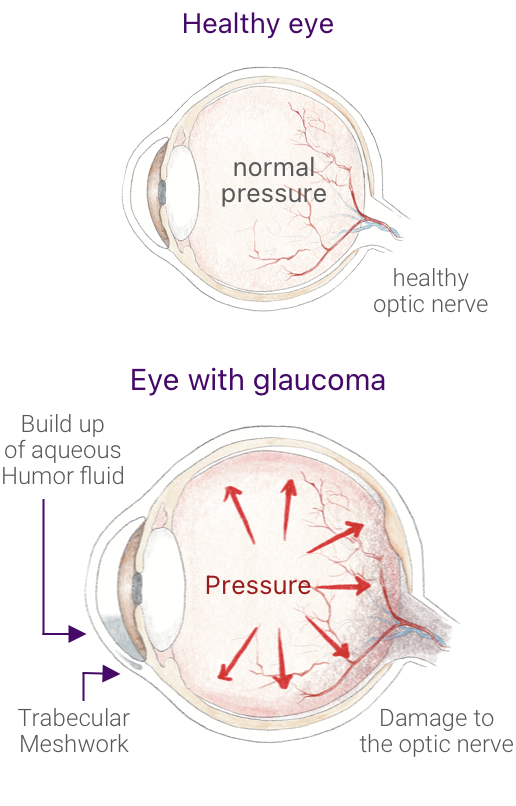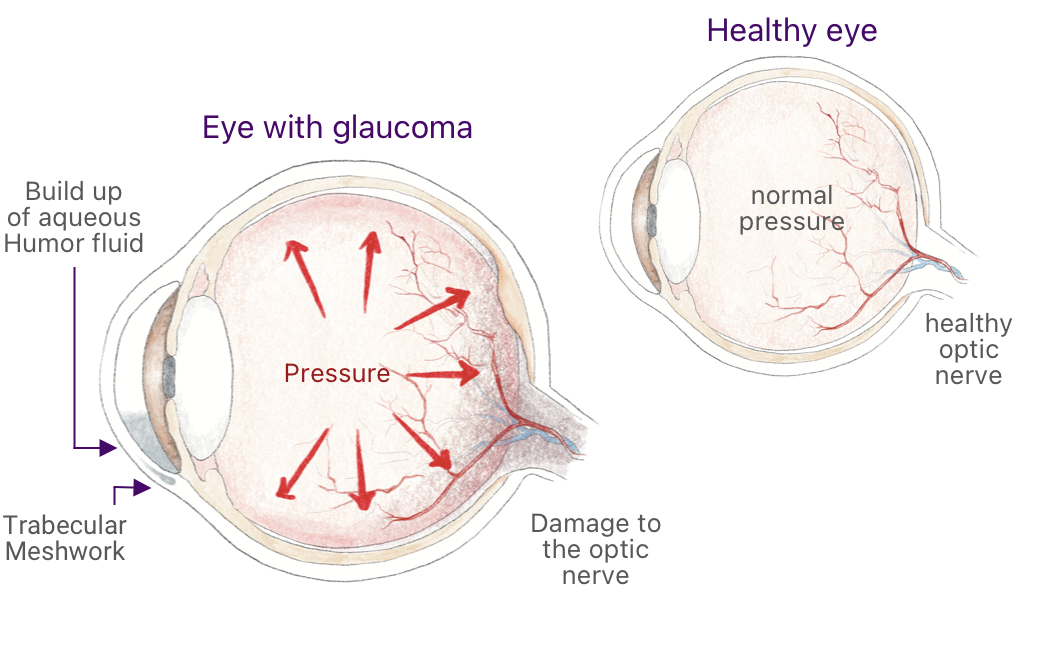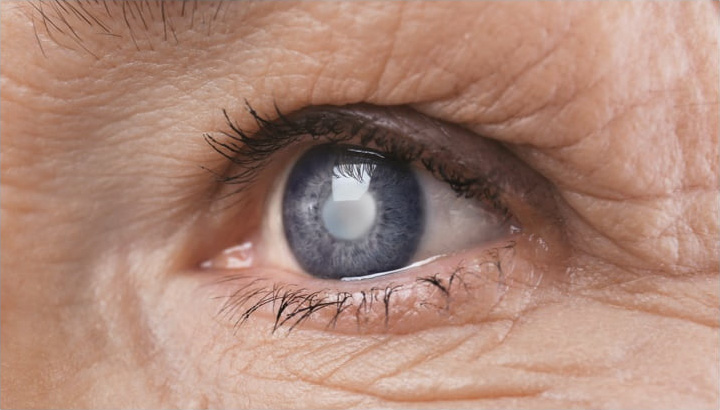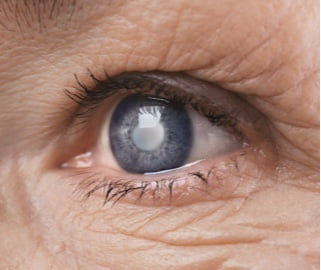Glaucoma
Glaucoma is a group of eye diseases that damage the optic nerve in the back of the eye.
The health of the optic nerve
is vital for good vision,
as it transfers visual information
from the eye to the brain.


and according to the World Health Organization is a leading cause for blindness
What is glaucoma?
Damage to the optic nerve in glaucoma is often caused by an abnormally high pressure in the eye.
This happens due to loss of the fine equilibrium between production and outflow (through the trabecular meshwork) of intraocular fluids (aqueous humor) in the eye.
When the drainage system does not work properly or when fluid is over produced, intraocular fluids are accumulated, leading to increased intraocular pressure.
This would be similar to overfilling a sink with an open faucet when the drain is partially blocked.
~ 3,000,000
Patients in the U.S.
with glaucoma
What is glaucoma?
Damage to the optic nerve in glaucoma is often caused by an abnormally high pressure in the eye.
This happens due to loss of the fine equilibrium between production and outflow (through the trabecular meshwork) of intraocular fluids (aqueous humor) in the eye. When the drainage system does not work properly or when fluid is over produced, intraocular fluids are accumulated, leading to increased intraocular pressure. This would be similar to overfilling a sink with an open faucet when the drain is partially blocked.

Glaucoma is a serious ocular disease and according to the World Health Organization is a leading cause for blindness

~ 3,000,000
Patients in the U.S.
with glaucoma

Main symptoms
Primary glaucoma (the type of glaucoma most common in older adults) is progressive with gradual effect that often is asymptomatic at the beginning, so that many people do not even notice a change in vision until the condition is at an advanced stage.
It begins with a subtle loss of peripheral (side) vision.
Characteristic vision loss of a glaucoma patient

Main symptoms
Primay glaucoma (the type of glaucoma most common in older adults) is progressive with gradual effect that often is a-symptomatic at the beginning, so that many people do not even notice a change in vision until the condition is at an advanced stage. It begins with a subtle loss of peripheral (side) vision)
Characteristic vision loss of a glaucoma patient

What causes glaucoma?
It is not known why the disease appears spontaneously, but it often appears slowly, first causing loss of peripheral vision so that the disease goes unnoticed for a long time. Genetics may play a role, particularly in people who develop glaucoma at an early age.


Diagnosis and treatments
Diagnosis of glaucoma is challenging and relies on several different methods with the goal of assessing the level of damage to the optic nerve.
There is no cure for glaucoma, however, early treatment aimed to control eye pressure can help stop or at least delay the damage and minimize vision loss. Treatment options include medicine (usually eye drops), laser treatment, or eye surgery. If left untreated, glaucoma will eventually cause blindness.
Even with treatment, about 15% of people with glaucoma become blind in at least one eye within 20 years.

Diagnosis and treatments
Diagnosis of glaucoma is challenging and relies on several different methods with the goal of assessing the level of damage to the optic nerve. There is no cure for glaucoma, however, early treatment aimed to control eye pressure – with medicine (usually eye drops), laser treatment, or eye surgery – can help stop or at least delay the damage and minimize vision loss. If left untreated, glaucoma will eventually cause blindness.
Even with treatment, about 15% of people with glaucoma become blind in at least one eye within 20 years.
